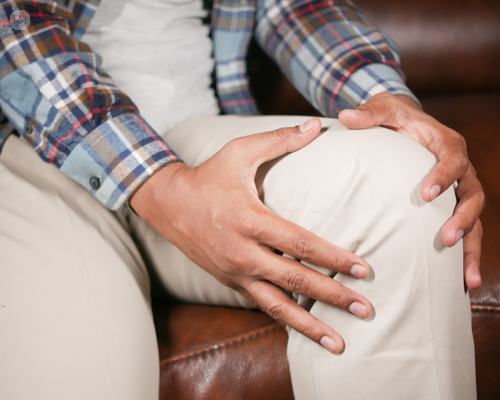Recovering from a knee replacement: Dos and don'ts
Autore:Knee replacement surgery is a common and effective procedure for relieving pain and restoring mobility in patients with severe knee damage, often due to arthritis or injury. A successful recovery plays a crucial role in ensuring the best possible outcome. This article takes a look at what you should and shouldn’t do during your recovery from a knee replacement.

What should I do during recovery from a knee replacement?
Follow your physiotherapist's guidance
Engaging in a structured physiotherapy programme is essential for regaining strength and flexibility. Follow the exercises and routines prescribed by your physiotherapist to help improve joint movement and reduce stiffness.
Use walking aids as needed
Assistive devices like crutches or a walker can help you get around safely during the initial phase of your recovery. Using these aids reduces stress on your knee and minimises the risk of falling or re-injury.
Manage your pain effectively
Take any prescribed pain medication as directed by your doctor to help manage discomfort. Pain relief can enable you to move more comfortably and participate in your rehabilitation exercises.
Elevate and ice your knee
Reducing swelling is important for recovery. Elevating your leg above heart level and applying an ice pack wrapped in a towel to your knee can help reduce inflammation and improve comfort.
Attend all follow-up appointments
Regular check-ups with your orthopaedic surgeon ensure your knee is healing properly. These appointments provide an opportunity to discuss any concerns and track your progress.
What shouldn’t I do during recovery?
Avoid high-impact activities
High-impact sports or activities such as running, jumping, or intense exercise can put undue stress on your knee and hinder your recovery. Stick to low-impact activities as recommended by your physiotherapist.
Don’t sit for prolonged periods
Extended sitting can lead to stiffness in the joint and slow down the recovery process. Make sure to move around regularly and avoid staying in one position for too long.
Avoid heavy lifting
Lifting heavy objects can strain your knee and compromise the integrity of your new joint. Refrain from lifting anything heavier than your doctor or physiotherapist advises.
Don’t ignore warning signs
If you experience any signs of infection (such as redness, heat, or unusual discharge at the incision site), severe pain, or swelling that doesn’t improve, contact your healthcare provider immediately.
Avoid crossing your legs
Crossing your legs can put pressure on your knee and affect your alignment. Keep your knee in a comfortable, neutral position while sitting or lying down.
Tips for optimal recovery from a knee replacement
- Stay active but balanced: Gradually increase the intensity of your activity levels in line with the guidance provided by your physiotherapist.
- Focus on nutrition: Enjoy a balanced diet rich in protein, vitamins and minerals. This can support tissue healing and overall recovery.
- Be patient: Recovery from a knee replacement can take several weeks to months, and it’s important to maintain a positive and patient outlook.
Recovering from knee replacement surgery requires careful adherence to medical advice, consistent physiotherapy, and being mindful of activities that could impact the new joint. By following these guidelines, you can maximise your chances of a smooth and successful recovery, allowing you to return to a more active and pain-free lifestyle.


